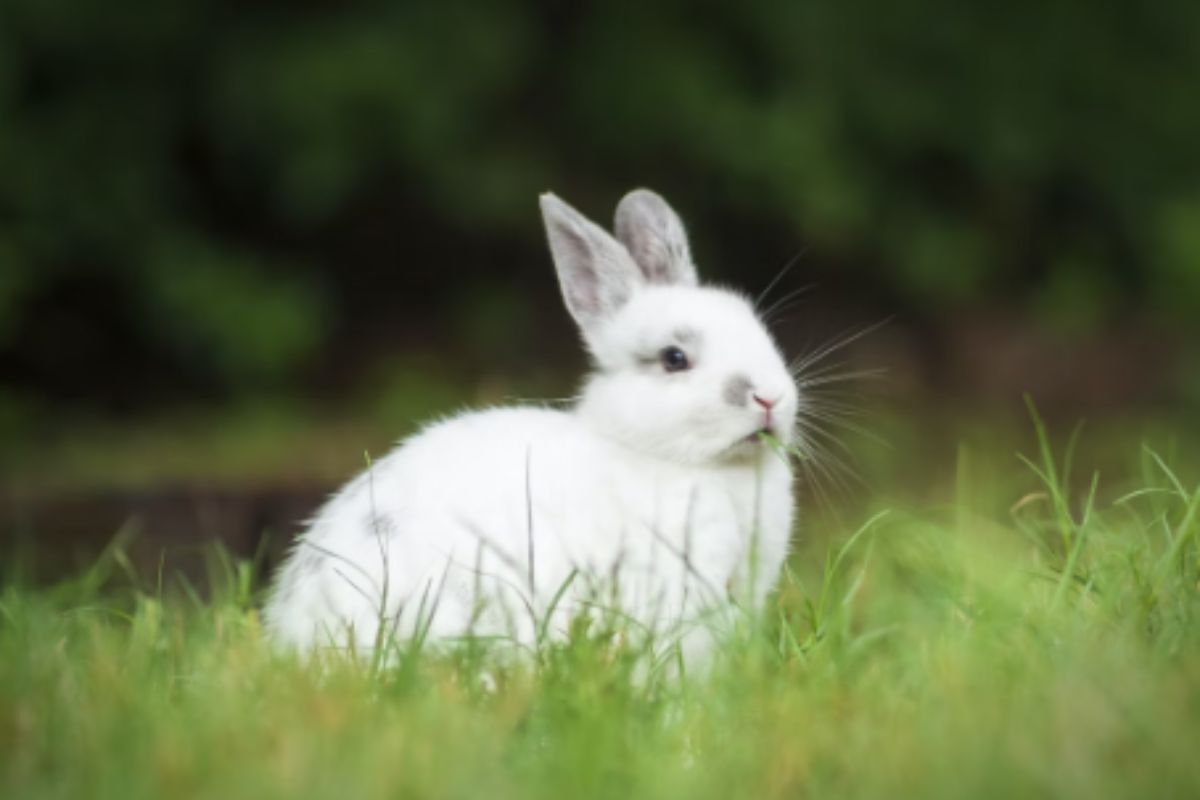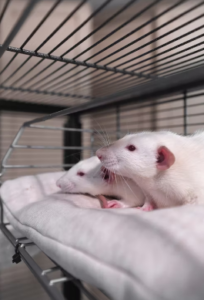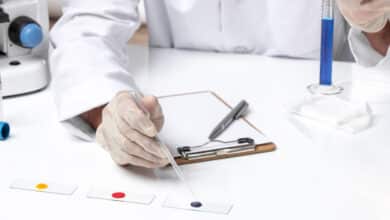
In wet lab analysis, critical techniques such as immunofluorescence (IF), Western blot (WB), and immunohistochemistry (IHC) use antibody tags to detect targets of interest.
These antibodies are produced in a host organism through cellular engineering.
Two of the most prominent organisms used for producing research-grade antibodies are mice and rabbits.
However, recently, rabbit monoclonal antibodies (mAbs) have become increasingly popular with researchers.
In this article, you will find out:
- 5 reasons why rabbits are great hosts for monoclonal antibody production
- How are rabbit monoclonal antibodies made?
- Benefits of using rabbit monoclonal antibodies
5 reasons why rabbits are great hosts for monoclonal antibody production
Recently, many different scientists have started switching to a rabbit antibody. There are five great reasons for that.
1. A rabbit monoclonal antibody can recognize human epitopes that mice antibodies can’t
Antibodies produced in rabbits are more immunogenic against humans than mice antibodies; they can target epitopes that don’t elicit an immune response in mice – a phenomenon known as immunodominance.
Immunodominance occurs when one epitope on an antigen is more immunogenic, thus causing the immune system to primarily respond to it. Rabbits are far less immunodominant than mice.
This means that we can target more antigens using rabbit antibodies, which helps widen the scope of their potential applications.
Moreover, rabbit antibodies come in handy when working with mouse models of human diseases because their cross-reactivity allows them to bind with mouse orthologs of human markers/proteins.

2. Rabbit antibodies can easily detect haptens
Haptens themselves are too small to have any immunogenicity and thus need to be combined with another antigen to elicit an immune response against them.
However, rabbit antibodies recognize haptens, making them extremely useful for research. On the other hand, mice and other rodents usually cannot launch an immune response against haptens.
Thus, we can quickly produce mAbs against haptens and other small molecules using rabbits.
3. Rabbit monoclonal antibodies are highly efficient (detection limits of 1 PM)
Some rabbit mAbs can detect targets even at concentrations as low as 1 picomolar. The greater efficiency of rabbit antibodies is due to their higher genetic diversity.
Rabbits are typically not inbred, unlike mice colonies that have been kept alive through inbreeding for years on end.
Scientists believe that inbreeding leads to a reduced immunogenic capacity, which may explain why mice antibodies don’t react as well with human antigens as rabbit antibodies do, and why they generally cannot recognize haptens.
4. Easier recovery of B cells from rabbits compared to mice
Up to 50 times more B cells can be harvested from a rabbit’s spleen than from a mouse’s spleen.
Most techniques for generating mAbs rely on extracting the B lymphocytes from the host organism. This becomes far easier in rabbits than mice due to their larger body size and a greater amount of blood/plasma.
At 3 months old, a rabbit in the lab will roughly weigh 2.5 kg, compared to a 25 g mouse at 6 weeks of age.
Plus, the greater amount of blood from rabbits leads to a less complex mass-spectrometry analysis of the serum IgG.
5. Rabbits can increase their postnatal antibody diversity
Rabbits undergo a fascinating phenomenon known as somatic gene conversion (SGC) and somatic hypermutation (SHM), which allows them to increase the diversity of their postnatal B-cell repertoire.
After VDJ recombination of the heavy chain, SGC increases the diversity in rabbits by replacing large fractions of DNA with the unused sequences from the unused VH regions. This phenomenon is only known to be present in chickens and rabbits.
Moreover, SGC is accompanied by SHM, which adds nucleotides to the chain and, thus, increases the diversity of the rabbit antibody.
SGC and SHM happen at the primary and secondary stages of B-cell development in rabbits. Here’s an overview of the three different stages:

- Neonatal B-cells
These are the earliest forms of B lymphocytes formed through the proliferation of cells in the rabbit’s liver and the omentum of the embryo.
The process usually starts during the first few weeks (2-3) of pregnancy and is carried forward into the bone marrow of baby bunnies at birth.
- Primary B-cells
After birth, the B cells in the bone marrow continue to grow.
However, when the rabbits are about two months old, the B-cell development process is transferred to be carried out in the gut-associated lymphoid tissue (GALT).
This forms a primary pool of B cells which is also sometimes called the pre-immune B lymphocyte pool.
- Secondary B-cells
When an exogenous antigen enters the rabbit’s body, primary B cells mature even further into secondary B cells (this becomes the immunized B cell library).
How are rabbit monoclonal antibodies made?
They are made using the same recombinant antibody protocol as mouse antibodies.
- Plasma cells are isolated from rabbits.
- The plasma cells are fused with myeloma cells to make hybridoma cells.
- These hybridoma cells are then screened for cells that target only a particular epitope (monospecific).
- Afterward, the monospecific cells are isolated and grown in large cultures to harvest rabbit monoclonal antibodies.

Benefits of using rabbit monoclonal antibodies
- High specificity and affinity: Rabbit mAbs generally have a higher affinity and specificity compared to mice antibodies. Thus, you will get fewer false positives and can work at a higher resolution with tiny amounts of antigens (up to 1 pM).
- Reduced signal-to-noise ratio (IHC or IF): Higher specificity makes these antibodies ideal for staining applications such as immunohistochemistry (IHC) or immunofluorescence (IF).
- Excellent for post-translational modifications (PTM) detection: A rabbit antibody can detect tiny molecules like haptens, and due to its high efficiency, it’s great for detecting small changes in PTMs, such as a newly added methyl, phosphoryl, or acetyl group.
- Can be used with mouse models of human disease: Their cross-reactivity with mice orthologs allows us to use rabbit mAbs in mice models of diseases like xenografted tumors. This isn’t possible with mice antibodies because they would recognize the targets as self-antigens and not react with them.

Conclusion
Recently, the research environment has seen a global shift towards using rabbit mAbs. These antibodies offer a higher specificity, greater diversity, lower signal-to-noise ratio, and the ability to detect epitopes that mice antibodies simply wouldn’t detect.
As such, rabbit monoclonal antibodies have become ideal for procedures like immunohistochemistry (IHC) or immunofluorescence (IF).
However, since these antibodies are more expensive than mice mAbs, you need to be sure to choose the best custom rabbit monoclonal antibody development service.
Many vendors may provide custom antibody services, but Boster Bio takes the lead in rabbit antibody production.
With market-leading affinity matured (top 0.0001% high affinity/specificity) clones, minimal upfront fees, and a fast delivery date of no more than 6 months, you can be sure that you are in good hands.
So, what are you waiting for? Let’s order some custom antibodies and make your next groundbreaking discovery!






